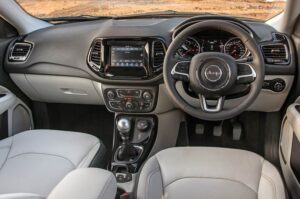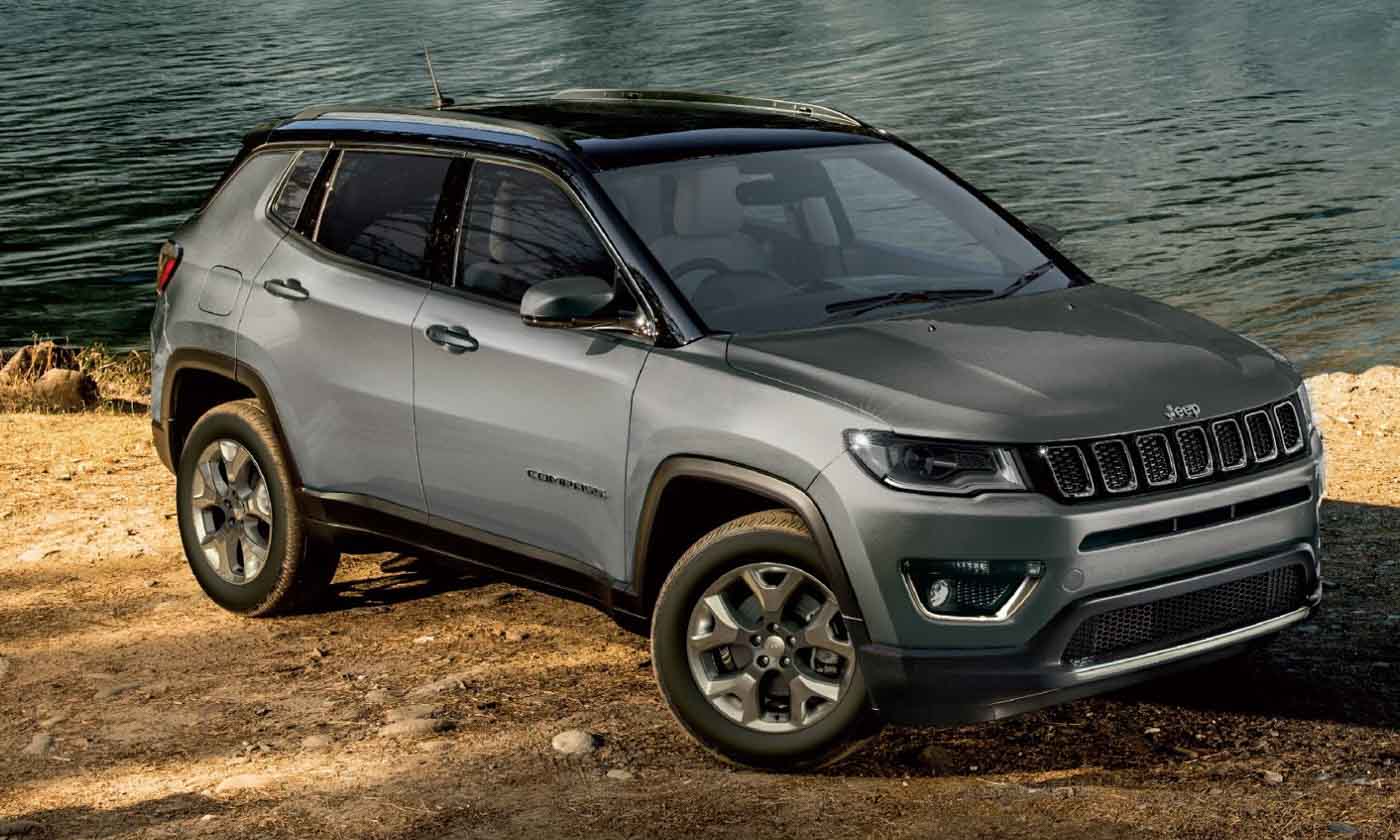Admittedly from a really low base, Jeep’s existence in Europe is multiplying. Momentum is building because it is making cars that suit European ailments. The Renegade was the first of them. Currently, the Compass has the potential to do better again, as it’s aiming at the biggest-selling region of the SUV marketplace. It is how big a Qashqai or even Tiguan or Kuga or Sportage.
Or, if you prefer, the Land Rover Freelander, but strangely Britain’s best selling SUV maker has now absented itself from Britain’s biggest-selling off-road segment and has nothing smaller than the Discovery Sport.
Plus, for nutty off-road wrangling, the Wrangler.
What can it be?
Contents
The plan is a strong point. A chrome strip operates below the roof-line, then flicks down to operate beneath the back window, and up again the other hand. The proportions appear tough and capable.
If you have got a long memory of failed cars, you will know there was another Jeep Compass in Britain. It seemed like a kid had styled it, and was horrible to drive, one of the most uncompetitive cars that you could have made the mistake of buying. Luckily so few are out there it won’t besmirch the image of the brand new one unless anyone mentions it. Anyway, this one has absolutely nothing in common, therefore proving that Chrysler is much healthier in bed with Fiat than it was when in bed with Daimler.
The new Compass has powertrains we have seen in different Jeeps and Fiats. Petrol is the 1.4 Multiair with variable valve actuation and turbo. Diesel will be the 1.6 and 2.0. There are a few FWD and manual versions, but for your top-power petrol and diesel, it is a compulsory four-wheel-drive and nine-speed automobile.
Interestingly, Jeep went to get a strut-type rear suspension instead of the multi-link that rival car-based 4x4s offer. The reason is it can give more travel, for better off-roading. If you wish to get serious off the street, wait a couple of months after launch for the Trailhawk version, which adds another fairly convincing layer of off-road hardware and applications.
Inside, in the majority of trim levels, Fiat-Chrysler’s infotainment system UConnect has had a major workover and has an 8.4-inch display with nav and CarPlay/Auto. There is lots of standard gear in general, which demonstrates that Jeep is not yet confident in Europe to place itself as high, although in America that’s how it sees itself nowadays.
About the inside
Layout, complete and distance
Do not come looking for the happy, cartoonish cabin themes of the Renegade. The Compass is more grownup. Materials and finish are all class-average, at least.
The touch-screen is simple to navigate and contains menus which make sense to the anglo-Saxon mind — that is a benefit of owning a system constructed for Americans, not Germans. The general snappiness of this system is impressive also. On-board programs include a set of graphics to assist when off-roading. The Apple CarPlay/Android Auto integration is pretty tight too. Just near the USB interface is a useful mesh pocket to hold your phone.

Jeep Compass
The climate controls are on the console, albeit replicated on the screen if that’s your taste. Next to these are buttons that allow you to defeat the lane-keeping and ESP. Afterward the 4WD system controllers. Oh and also the steering wheel has 16 buttons on the front (cruise, menu, and phone) and another 6 hidden on the opposite of the spokes (sound ). But it’s all laid out logically enough to be useable.
There’s good-average space since the automobile’s family job demands. In front, the seats are Euro-style inviting, not US squishy. Pity the RHD conversion has a small driver left-foot space.
Grown-ups can sit at the back, or even just stretch out. Plus amiable vent outlets and small reading lights. Drop the center armrest plus a gaping hole opens into the boot. Jeep moves this off as a pass-through’ feature. We call it economical.
The boot itself is broad but shallow at our test car, but that is because beneath the flooring is an optional full-size spare wheel, something off-road adventurers will be relieved about. With a space-saver, there is a multi-level floor and more cargo space.
Driving
What is it like on the street?
The 170bhp 1.4-liter petrol is a dynamic and sweet-sounding engine at other Fiats and Alfas. Not here. It drones miserably, both in suburban speeds and if accelerating. Each of the verve seems to have been sucked out of it, and you need 9.3sec for 0-62.
Nonetheless, it is not all grim. The ZF nine-speed auto box is less fretful than in other applications, shifting ratio just when it makes sense, do it smoothly, and downshifting helpfully as you descend hills.
The petrol we analyzed is 2.0, with the same transmission and additionally making 170bhp. The performance was similar, naturally. Although a 2.0 diesel is always going to have more torque than a 1.4 petrol, the auto box hides the petrol’s deficit well by using more revs. And since the gas can be noisy and unpleasant because of its type, it’s no quieter than the gas even if it rains lower.
The auto box’s top ratios imply peace at last from the engine if you are cruising.
Another chassis tweak is frequency-selective dampers, a Koni race-derived quality that’s supposed to permit sharp shocks to be consumed by the springs while quelling the longer slow motion of body float. Hmmm. The suspension is quite active and surprisingly unpleasant at the town rate. Not good for a household crossover. As rate assembles, the harshness does melt somewhat, but this remains a tautly suspended automobile at least traveling solo.
The well-tied suspension, as well as cleverly distributed torque throughout the 4WD system, does make this can be perfectly capable thing through corners, even ones with a lot of crests and dips. In that type of regime that the steering is accurate, also, if necessary. Frankly though, in a family crossover, this gift is a bit superfluous, particularly given that the engines aren’t up for it. More plushness would have been a saner compromise.
It’s reasonable to speculate that the Trailhawk variant, with longer springs for better clearance and puffier tires for grip, will likely ride more quietly. However, it doesn’t arrive for a few months following the rest of the range, thus we haven’t driven it. Other 4WD versions have sand, snow, and sand, all of which retune powertrain, diff, and traction-control approaches to suit.
Running costs and Dependability
The sticker prices look tempting. The lead-in Sport variant includes the 1.6-liter 120bhp diesel and is under #23k. That engine always has front-drive and a guide box. What game’ is to be obtained out of a low-powered gas crossover is moot, but we’ll let that pass.
The EC fuel economy is 64.2mpg, for 117 g/km. You may do better than 40mpg real world. Note that this engine, despite being Euro 6, has revealed up quite badly for NOx emissions in separate on-road testing, so examine your conscience.
The 2.0 petrol is rated at 138g/km for the 140bhp manual FWD and 148 for the 170bhp automobile 4WD we drove. That car lists at #34,295 in the Limited trim we drove.
Kinds of Petrol are 148g/km for its 140bhp manual FWD and 160g/km for your 170bhp auto 4WD. That corresponds to 45.5mpg and 40.9mpg ranked ingestion.
The Sport trim gets air and forward collision warning, along with a 5.0-inch screen without phone mirroring. Step up #3k into big-selling Longitude trim and you net that fancy big-screen UConnect Nav, also fogs and 17s.
Restricted adds 18s, heated leather seats, turning camera and sensors front and back and park help, blind-spot and cross-traffic warning, and roof rails.
Alternatives include a glass roof, vented seats, radar cruise with traffic jam ability, a two-tone roof, and xenon headlamps (which ought to be regular ).
The crash mitigation system, and also a five-star NCAP, should help with insurance but UK ratings haven’t been assigned yet.
